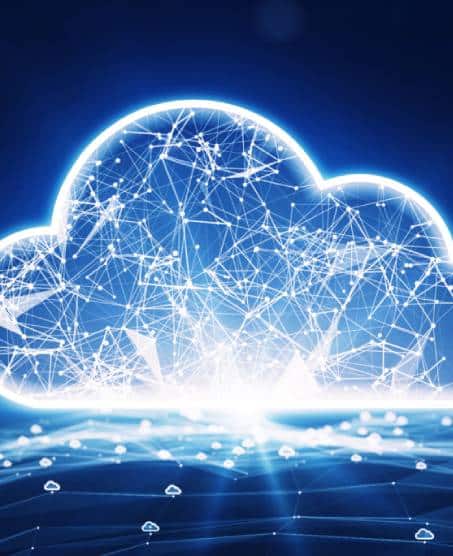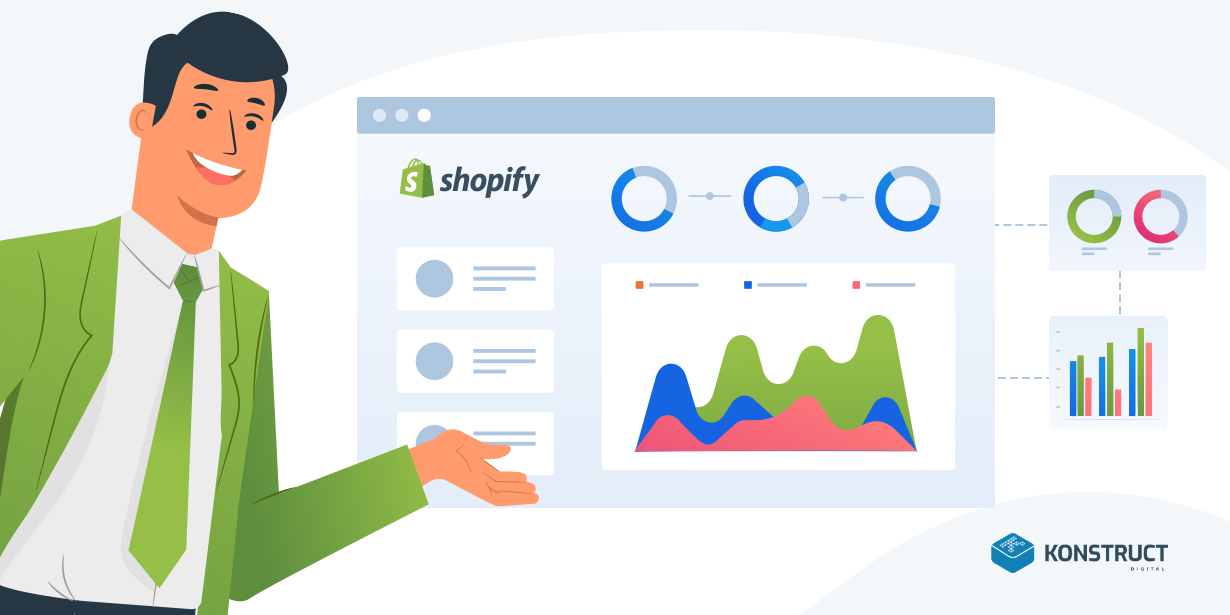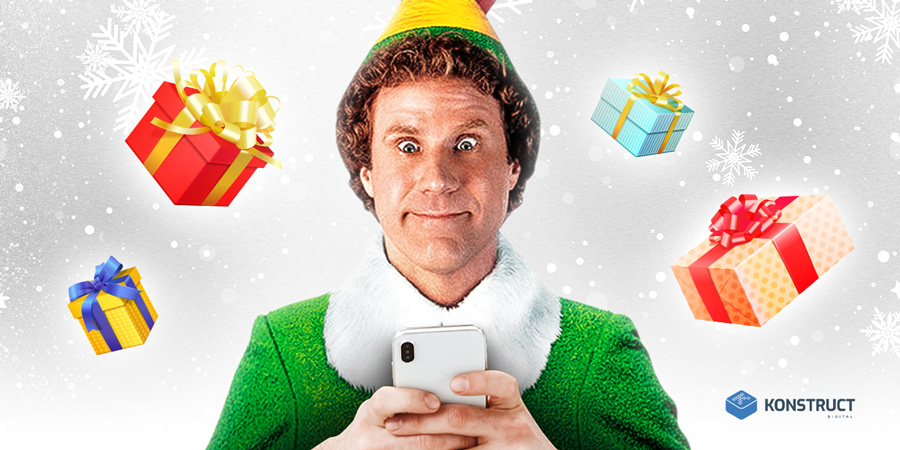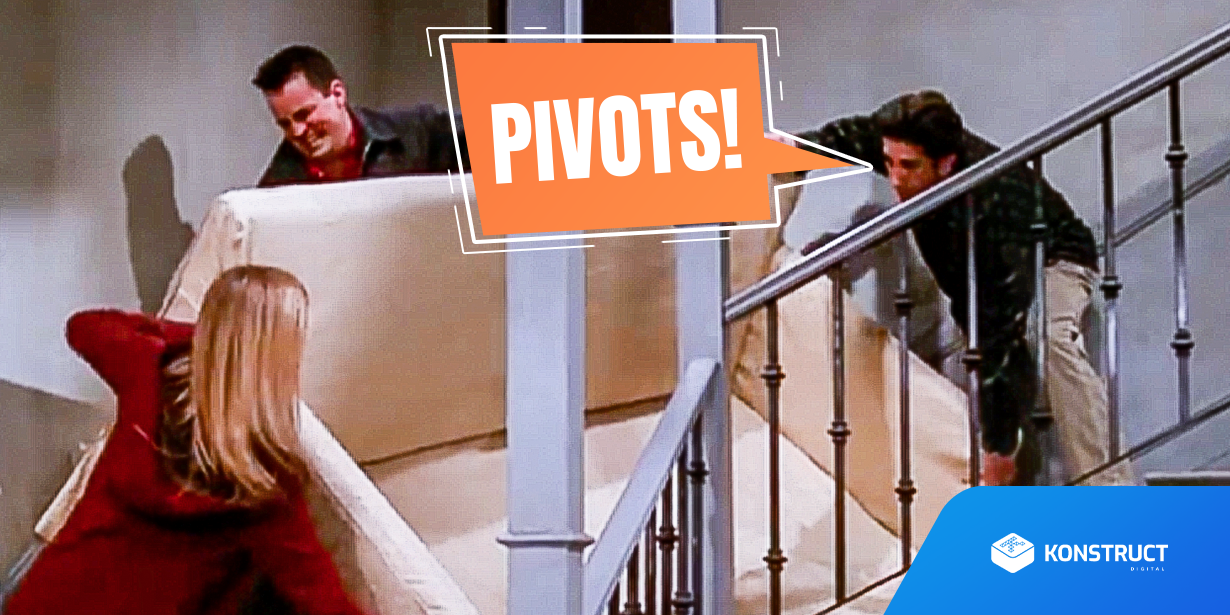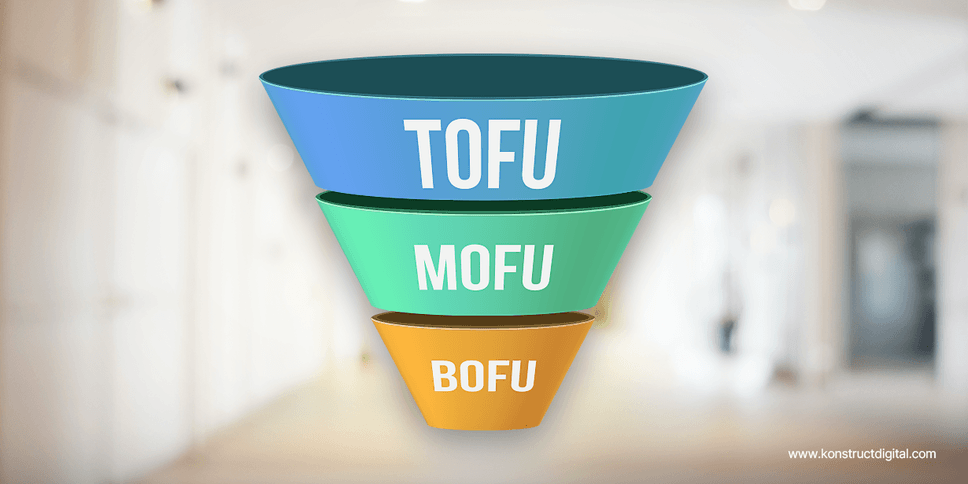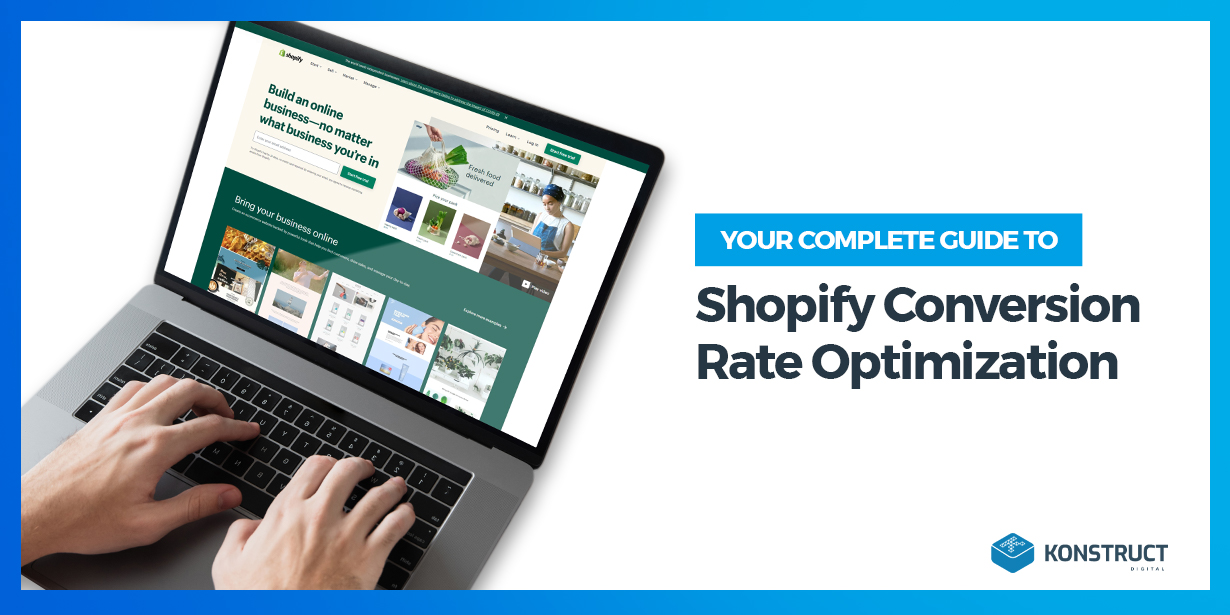Imagine combining the sensory and human connection of visiting a physical store with an ultra-personalized digital layer. That’s a pretty incredible combination!
Phygital is just a peculiar-sounding word to describe the marketing trend of elevating a physical experience with a digital component–or the other way around.
Despite the fad-sounding name, it’s clear that phygital is here to stay.
In this blog post, we’ll clarify the concept of phygital marketing and unpack some of its incredible potential.
The Rise of Phygital Experiences
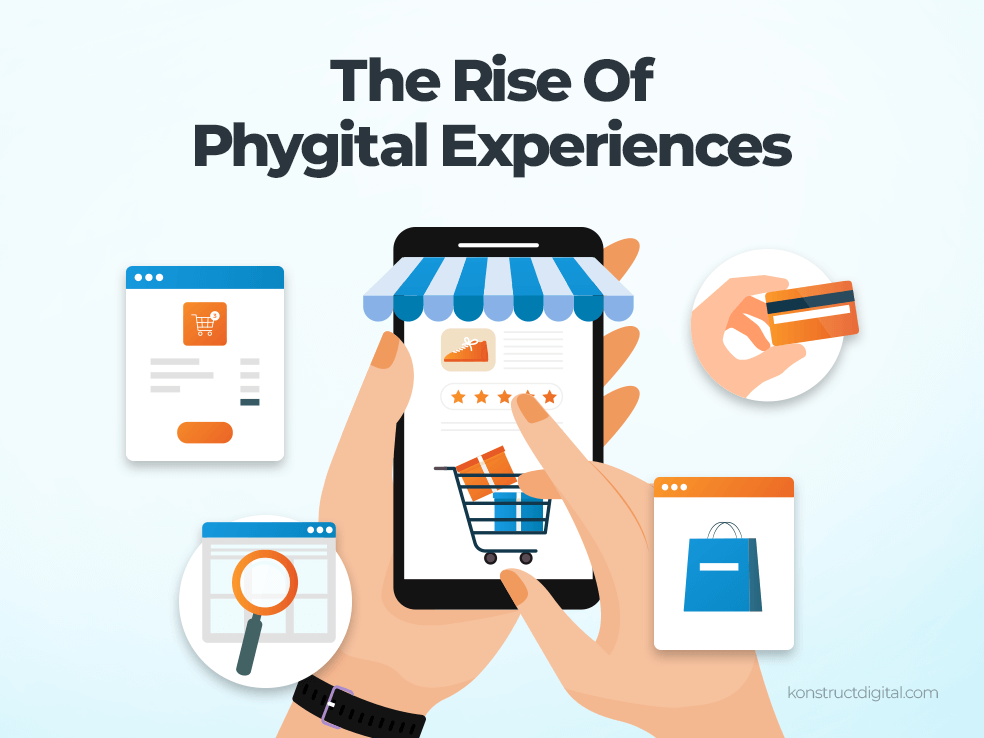
Phygital is a term to describe omnichannel marketing, which is a strategic approach that harmoniously integrates all marketing channels to provide shoppers with a truly seamless and cohesive experience.
The intent behind combining digital and physical experiences is to draw from the best of both worlds, giving customers unique, highly personalized experiences that leave a lasting impression.
The digital world has slowly been creeping into our physical lives. Take the impact of smartphones and how we now expect to get a personalized, digital dimension that complements our daily physical lives, for example, via Google Maps.
Online shopping patterns let online retailers personalize offers and suggested products. Apps with customer loyalty programs let stores such as Starbucks offer their customers personalized discounts and extra conveniences when using their rewards app.
Phygital goes beyond enhancing the consumer experience; it serves as a seamless integration of physical and digital marketing efforts for brands, creating abundant sales opportunities for their products.
The case for phygital is clear: while we increasingly rely on digital technology, we simultaneously crave physical experiences. Hardback books haven’t been made obsolete by ebooks – instead, both offer consumer value. Connecting with consumers where they’re at is at the core of the phygital marketing movement.
Everything Old is New Again
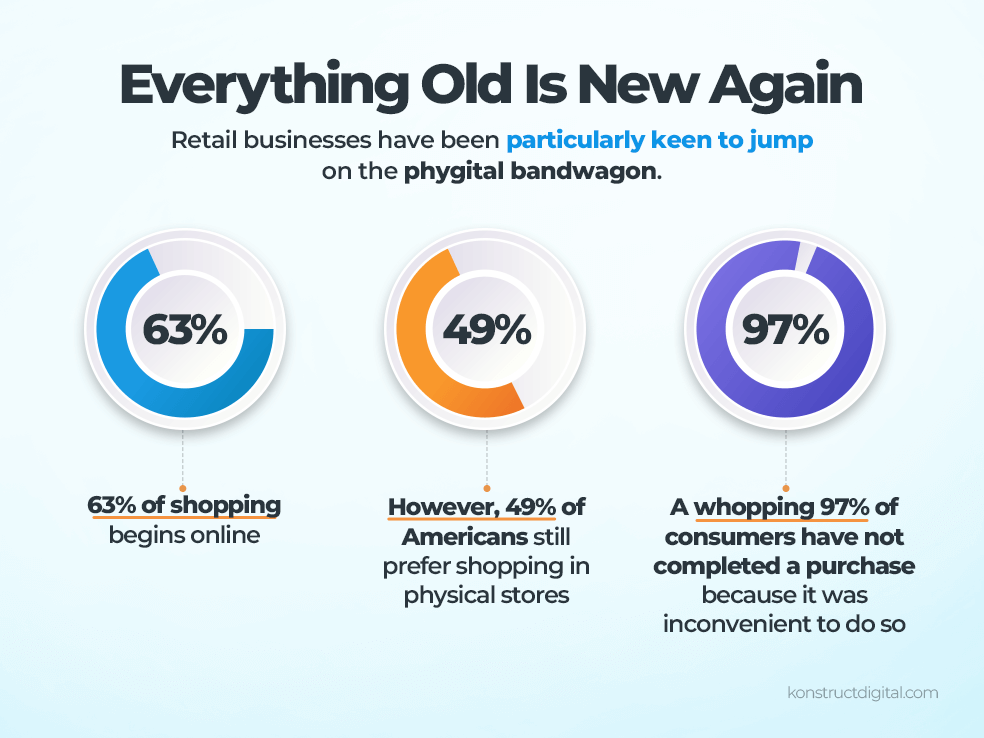
Retail businesses have been particularly keen to jump on the phygital bandwagon.
Designing phygital experiences is a way to rejuvenate an otherwise struggling sector that is trying to regain footing against eCommerce giants like Amazon. To entice shoppers to visit a physical store, the store must offer an exceptional experience. Cue phygital!
63% of shopping begins online (Google). However, 49% of Americans still prefer shopping in physical stores (Moni Group). This data goes to show that stores have a lot to gain from offering experiential, phygital marketing. As we’ve learned, eCommerce has not necessarily killed brick-and-mortar retailers, just those that provide a poor customer experience.
With the rise of online shopping, consumers have experienced the convenience and personalization of interacting with a brand when and where they want. When they bring those expectations along to the physical store, customers have often left disappointed.
According to research by the National Retail Federation, customers keep emphasizing that price and quality are the most important factors when buying a product. At the same time, convenience seems to stand between them and making a purchase. A whopping 97% of consumers have not completed a purchase because it was inconvenient to do so (NRF).
Phygital marketing boosts the customer experience when visiting a physical store. Using digital tools can provide customers with the personalized, convenient, and exciting shopping experience they crave. In that way, businesses can actually deliver more value at a lower cost.
Omnichannel Experiences vs. Phygital Strategy
Before phygital became a thing, retailers were talking about omnichannel marketing strategies, where they were expanding the platforms where customers could buy, such as in-store, online shopping, via a mobile device, or through social media. In this approach, the purpose was to give consumers as many options as possible so they could buy products through their favourite channels.
For millennials and younger consumers, the difference between physical and digital retail platforms doesn’t exist. That’s why a phygital marketing strategy goes a step further than the omnichannel marketing approach and completely connects and melds the physical and digital worlds.
What’s a phygital strategy, then? Well, adopting a phygital retail strategy is not only a marketing strategy. It starts by changing the way we look at the customer journey.
To support a non-sequential customer journey where customers bounce back and forth between online and in-store touchpoints, businesses must incorporate digital and physical data in their CRM systems. It needs to be as easy and effortless for the consumer to engage with the brand in the physical world as it is online.
Then, businesses need to be looking at ways they can incorporate artificial intelligence, automation, augmented reality, and other digital technologies into showrooms that connect the physical and digital worlds to elevate the customer experience.
A brick-and-mortar shop is no longer a place where people go to buy. If customers just wanted to buy an item, they can easily just do that online. Instead, customers go to a store to experience, play, connect, and be entertained. In a phygital strategy, the physical store becomes an amusement park of sensory and digital experiences to showcase the brand and its products.
Here are some examples of retail businesses and other sectors successfully embracing a phygital strategy.
4 Phygital Examples
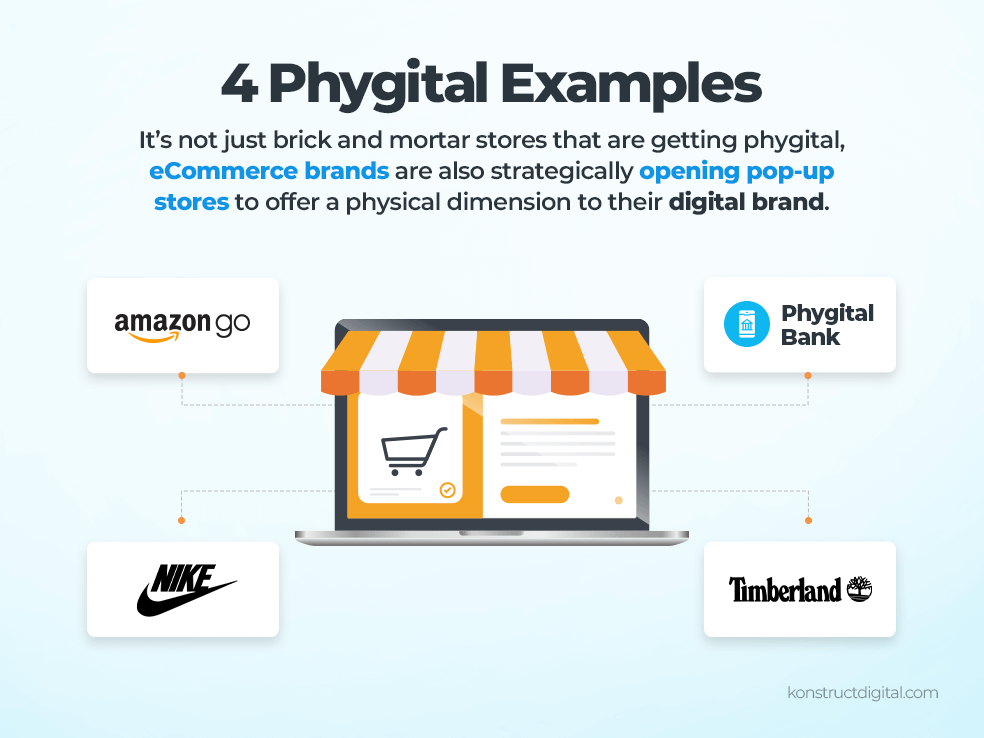
It’s not just brick-and-mortar stores that are getting phygital. eCommerce brands are also strategically opening pop-up stores to offer a physical dimension to their digital brand.
The benefit phygital marketing strategies for stores and customers is that shoppers can physically touch, get a feel for the product, and engage with staff who can provide advice on how to get the most out of the product.
If you’re still having a tough time envisioning what a phygital, omnichannel experience might look like, here are a few phygital examples.
1. Amazon Go
In a novel, phygital rethink of their shopping experience, Amazon introduced a number of Amazon Go stores across the U.S. By utilizing a dedicated app, customers can effortlessly make purchases without the need for traditional checkouts. Through a virtual cart linked to their Amazon account, both customers and products are automatically recognized, enabling seamless payment processing as they exit the store.
2. Phygital Banking
Banks have long been grappling with what to do with their branches as more customers turn to online banking. Although many are happy with moving their day-to-day banking transactions online, 50% of consumers still see value in speaking with a bank representative in-person (Accenture). In response, banks have transformed their branches into dynamic hubs for information and community education. Customers now have the opportunity to engage with specialists through video conferences and reserve meeting spaces. Some banks have even gone further by providing co-working spaces and coffee shops, creating a multifunctional environment that caters to the diverse needs of their customers.
3. Nike
Nike’s concept stores are another great example of successful physical marketing. The stores are designed around local data analysis of NikePlus members. Those insights have then informed what products are offered in-store, and the development of store-specific product lines. With the Nike app, members can redeem rewards in the store, book a product testing session, reserve products for pick-up, and access curbside returns by texting the store.
4. Timberland TouchWalls
In an effort to complement the in-store experience with their eCommerce selection, Timberland introduced TouchWalls in their Manhattan store. The digital displays present customers with online-only inventory where shoppers can touch product photos to learn more and build personalized shopping lists.
In turn, Timberland harvests data from the interaction between store-provided NFC tablets, the touch wall, and the store visit that they can analyze for better retail and remarketing experiences.
All of these examples demonstrate a way to offer experiential marketing – a strategy that invites and encourages shoppers to engage with the brand. It offers something more than digital or physical marketing could do alone.
Disrupting the Buyer’s Journey
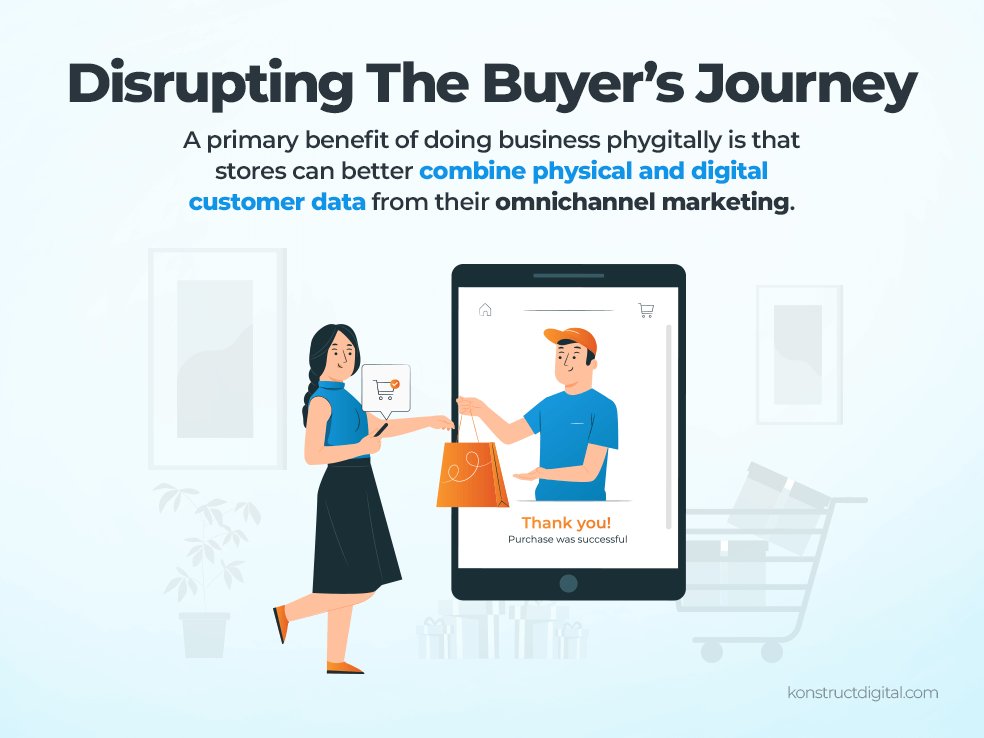
The fact that stores can better combine physical and digital customer data from their omnichannel marketing is one of the primary benefits of doing business phygitally.
By adding digital environments to physical stores, brands can harvest key customer data on how customers shop in-store and online, and their behaviour after a purchase. To entice customers to interact with these digital environments, they must provide value to the customer experience. Whether it’s excitement, convenience, connecting, or sharing, phygital marketing tools provide something unique to the shopping experience.
As brands learn more about their customers, they can provide even better and unique ways to engage with them. This development is great for businesses identifying customer pain points and mapping out more specific customer journeys.
In China, phygital has really taken off, and customers can bounce back and forth between physical and digital worlds easily. Retail stores use AI, augmented reality, and facial recognition to give shoppers ultra-personalized offers and pay without taking out their wallets, removing any inconvenience and redundancies for consumers.
While these steps boost the user experience for Chinese shoppers, retailers in the Western world are constrained by privacy concerns and legislation, especially those affected by GDPR. It will be interesting to see how retailers balance the desire for convenience and personalization with privacy in the years to come.
Phygital information and access allow brands to laser-focus on when customers need what information. For example, better customer information leads to better suggestions for related products.
Ultimately, exploring many different ways and locations to better connect with customers expands the opportunities for brands to lead potential customers toward a purchase.
How to Phygitalize
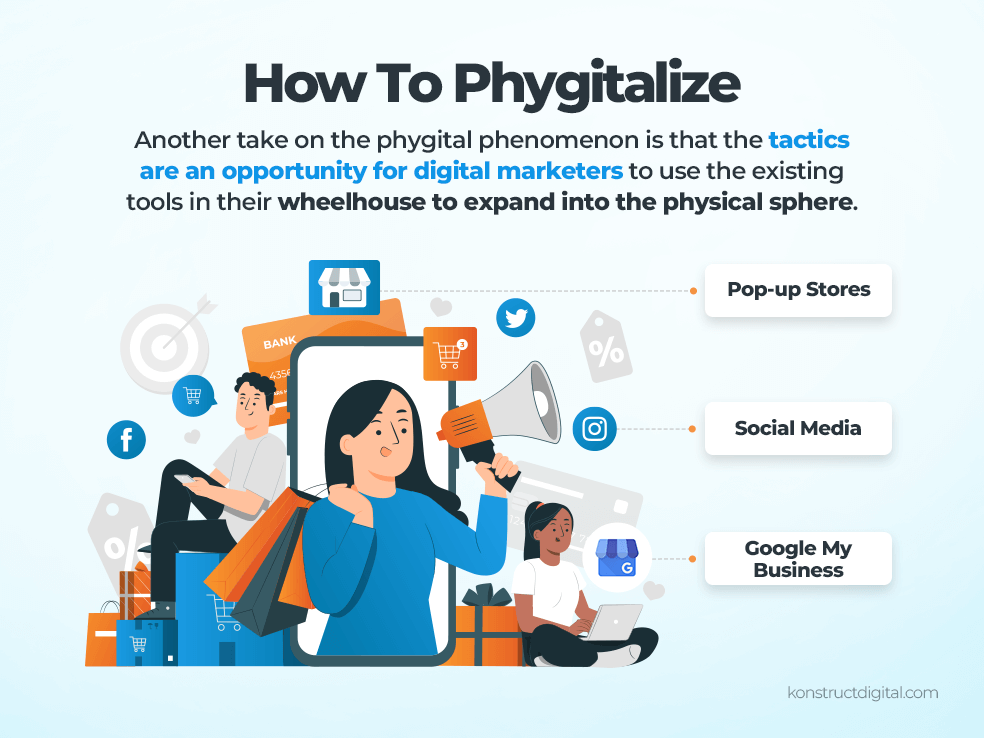
Another take on the phygital phenomenon is that the tactics allow digital marketers to use their existing tools to expand into the physical sphere.
The tools to connect the physical and digital experiences have been around for decades, so now it’s just a matter of putting them to work.
If you’re not a large retailer such as Nike or Amazon, you might wonder what phygital has in store for you.
On a micro-scale, there are many ways to use phygital marketing tactics.
Social Media
Instagram, Facebook, and other social media platforms make it easy for small vendors to add a digital storefront to their brick-and-mortar stores. Both Facebook and Instagram offer eCommerce features where stores can sell their products.
Social media also enables stores to run ad campaigns, promote special deals, or even create customer loyalty programs. Rewarding customers who engage with your brand on social media is one way of digitally connecting. Using social media to promote opt-in offers where customers can comment on a post offering a special deal and later pick it up in-store, is yet another way of blending physical and digital marketing.
Pop-Up Stores
Creating a pop-up store is just another way of adding a physical experience to the product offering of your online store.
Think about how online vendors have stands at local markets – that is entry-level phygital marketing. Using customer data from your online business, this information can help you identify where your loyal customers are and set up a pop-up shop nearby.
To take this phygital tactic to the next level, you could find a way to bring technology to the pop-up store and let customers engage with your physical product and your online inventory simultaneously. That’s a basic omnichannel experience.
Google My Business
Business listings on Google Maps are yet another tried-and-tested way to add a digital storefront to a business. Google My Business offers many ways to engage with customers and promote the business.
It’s possible to upload store images, promote special deals, and even advertise on Google My Business. Customers can also connect by calling, messaging, or leaving reviews. Through your business listing, you can also access important data on how people interact with your listing–information that can help you improve both your physical store and your listing.
Create the Ultimate Phygital Marketing Strategy
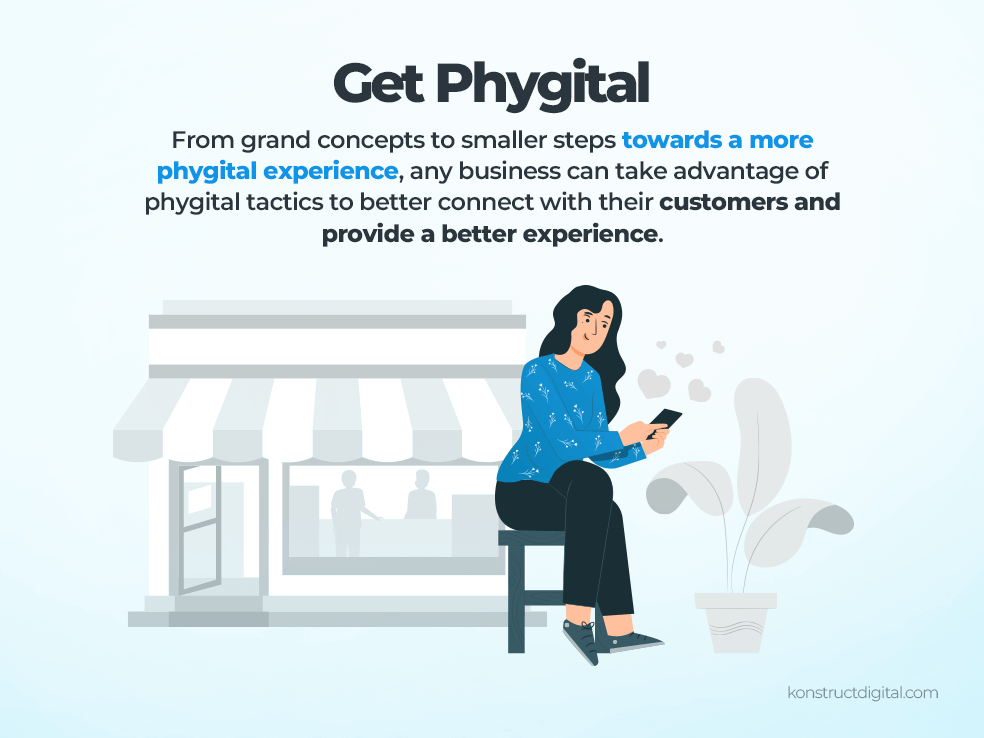
Even small-scale steps to get more phygital are a marketing investment. If you’re unsure how much budget to allocate towards marketing to make a difference in your bottom line, we have some great advice for you.
From grand concepts to smaller steps towards a more phygital experience, any business can use phygital marketing tactics to better connect with their customers and provide a more seamless experience.
If your business is struggling to establish a digital presence for your brand, or you’re wondering what steps to take to boost your company’s digital marketing, Konstruct is here to help!
Our team of marketing experts has the knowledge, tools, and experience to help you dominate the -gital in phygital.
Contact us for your phygital marketing proposal, and let’s create the ultimate phygital experience for your customers.
